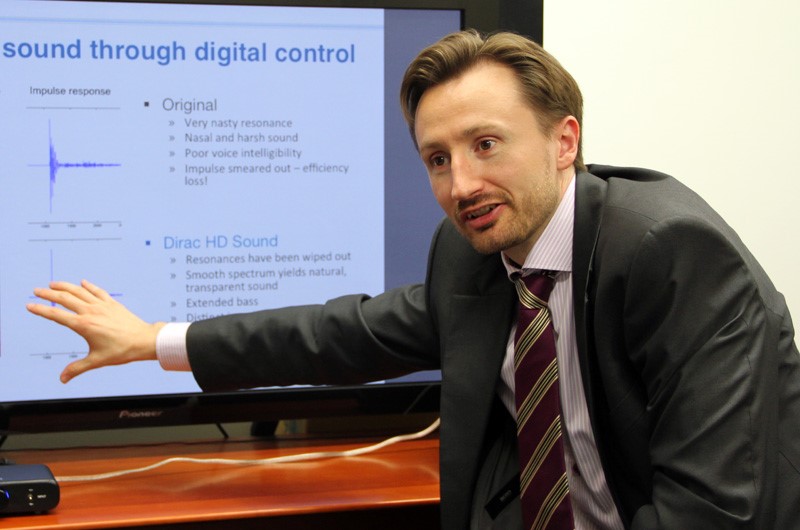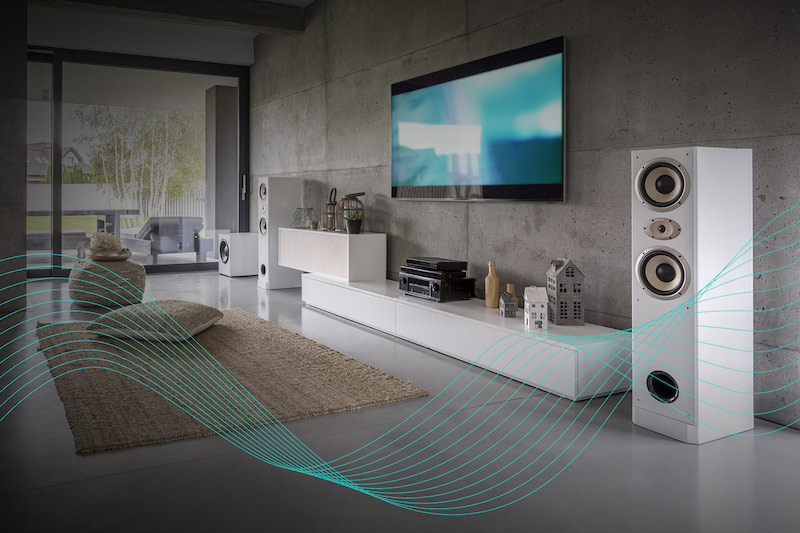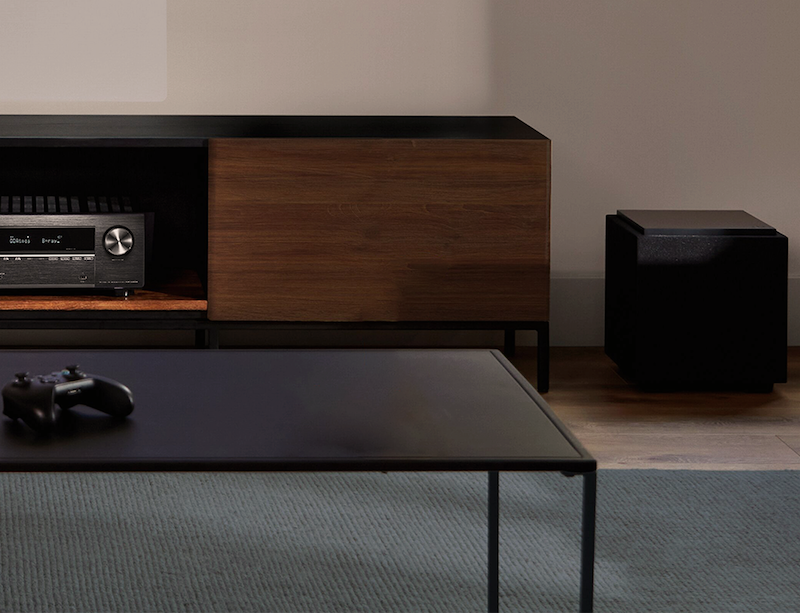This past September, CEDIA and CTA unveiled RP22, which details recommended best practices for achieving peak audio performance in an “immersive” home theater or listening space. Since then, CEDIA has been teaching workshops based on RP22 recommendations, most recently at their Tech & Business Summits in Chicago and London. One of the more challenging design concepts outlined in the RP22 document how best to even out seat-to-seat audio variations by installing multiple subwoofers in a room.
Dr. Mathias Johansson, an audio expert and co-founder of electronic room correction software manufacturer Dirac, said that he appreciates the recommended practices set forth in RP22, as a whole, but particularly those involving multiple subwoofers.
In a recent interview with RTT, Johansson expressed his appreciation for the new RP22 recommendations, particularly how it addresses the challenges of multiple subwoofers in immersive room designs.
Johansson said that he appreciates that RP22 makes it clear that designing a great immersive audio system is not a simple process. “It’s not a cookbook, which to me is a good thing because it’s not that simple to build a great system,” he said.
With Dirac’s experience working extensively with room acoustic optimization, Johansson said that he is pleased with the unbiased nature of the RP22 recommendations. “[RP22] was ‘to the point’ in how you can use advanced bass management schemes to even out the seat-to-seat variations,” he said. “I think they did a good job of finding consensus on what actually constitutes good sound, and that it’s not just based on a subjective opinion. Of course, opinion is always going to be a part of the process of good audio, but there is also science behind it.”
Harman International Research Acoustician Todd Welti long ago advocated for placing a large number of subwoofers at different locations around a room for the best home theater performance. RP22 brings that discussion back to the forefront, which is music to the ears of Matthias.

“With a single subwoofer, it’s really just one seat that gets the best possible audio experience, and then that experience varies quite a lot when you move around in that room,” Johansson said. “With multiple subwoofers, you can at least ensure that in the bass region you have similar experiences across multiple seating locations.”
Johansson noted that although RP22 advocates for creating a more even sound field, it does not oversimplify the process. In other words, just because you have multiple subwoofers, you are not automatically guaranteed to get more even bass response.
“You do get more control points,” he said, “so there’s a greater likelihood that you get more even bass response throughout the room. But depending on the room and your speaker locations and the listening locations, you can get varying results. You can actually end up having a worse bass response, by using more subs, if you don’t design the layout properly. You need to align them in gain and phase, and you have to be careful with crossover settings.”
RP22 addresses the challenge of how different subwoofer placements will impact seat-to-seat variation, but also mentions advanced bass management schemes and automatic systems without mentioning specific manufacturers.

Dirac Live Bass Control is one such automatic system designed to help improve sound performance in any listening area. It is part of the Dirac Live family of audio processing software, which also includes Dirac Live Room Correction and Dirac Live Active Room Treatment. Each solution was created to complement the other, according to Johansson.
Powered by machine learning and AI, Dirac Live Bass Control was designed to intelligently co-optimize an audio system’s subwoofers and speakers to deliver “consistently excellent” bass, regardless of the listener’s location or room environment. The software aggregates measurement and location data from each subwoofer to determine how a system’s bass is distributed throughout the room. It then identifies gaps in the sound waves and distributes bass evenly across the listening area.
Dirac Live Active Room Treatment (ART) leverages Dirac’s expertise in MIMO mixed-phase impulse response correction technology to make all speakers in a sound system work cooperatively to accomplish what passive acoustic treatments struggle to achieve. With decay times reduced digitally and automatically, listeners experience clearer sound in a larger sweet spot, devoid of “boomy,” smeared bass — as if the room itself didn’t exist. The end result, Dirac claims, is an audio system that uses speakers to control and optimize a room’s sound quality, instead of the room dictating the experience.
Johansson said that awareness of and interest in Dirac’s software tools has increased in the past two years thanks to partnerships with Storm Audio, Onkyo and Integra, Pioneer Elite, and Denon and Marantz but also RP22.

“Just a few weeks ago we had a training in Asia for 400 integrators,” Johansson said. “It shows a huge surge, I’d say, and I think there are many factors behind that, but one is simply that we are more broadly available, but I think also the trend toward multiple subs and RP22 helps in bridging this knowledge gap.”
Focusing on its own solution but also on increasing the audio acumen of the industry, DIRAC is developing more training and a certification program to provide more value to custom integrators. “It’s similar, I would say, to RP22 in its purpose,” Johansson noted. “It will be meant to educate not just on DIRAC Live but in general what room acoustics do to your system and how all of these aspects that touch on the room acoustics, room optimization, and so on can be addressed.”
RTT Podcast 149: CEDIA’s Walt Zerbe on Immersive Audio Design and More









